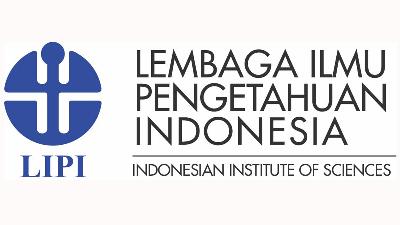Building Trust With CSR In Outpatient installation of Dinda Hospital Tangerang
Abstract
Keywords
Full Text:
PDFReferences
Aaker, James (1999) Relationship Marketing for Competitive Advantage. New York: McGraw-Hill, Inc.
Agusty Ferdinand (2012) Metode Penelitian Manajemen, Badan. Penerbit Universitas Diponegoro. Semarang.
Akbar M.M and Parvez (2009) Impact of Service Quality, Trust, and Customer Satisfaction Loyalty, ABAC Journal, Vol. 29, No.1.Januari, 24-38
Adams, Linda. (2011) "Learning a new skill is easier said than done". gordontraining.com. Gordon Training International.
Baron, R. M., & Kenny, D. A. (1986). The moderator–mediator variable distinction in social psychological research: Conceptual, strategic, and statistical considerations. Journal of personality and social psychology, 51(6), 1173.
Becker, Brian E, Mark A. Huselid dan Dave Ulrich (2001) The HR Scorecard- Soundview Executive Book Summary. Boston: Harvard Business School Press
Creswell, J. W. (2014). Research Design: Qualitative, Quantitative and Mixed Methods Approaches: Fourth edition. Thousand Oaks, CA: Sage Publications.
Creswell. J. W. (2017) Research Design: Pendekatan Metode Kualitatif, Kuantitatif dan Campuran, Edisi ke-empat. Yogyakarta: Pustaka Pelajar.
Doney, P.M., and Cannon, J.P. (1997) “An Examination of The Nature of Trust in Buyer – Seller Relationship, “Journal of Marketing” April, pp. 35-51.
Divisi Pemasaran Rumah Sakit Dinda Tangerang (2019) Survey kepuasan pelanggan Rumah Sakit Rumah Sakit Dinda Tangerang
.Foster and Cadogan (2000) The HR conceipt to customer loyalty. Boston: Harvard Business School Press
Fitzsimmons, James A, and Mona J. Fitzsimmons (1994) Service Management for Competitive Advantage. New York: McGraw-Hill, Inc.
Gaffar, Vanessa (2007) Customer Relationship Management and Marketing. Public Relation. Bandung: Penerbit Alfabeta.
Green, Lawrence (1980) Health Education: A Diagnosis Approach, The John Hopkins University, Mayfield Publishing Co
Gerson, Richard F. (2002). Mengukur Kepuasan Pelanggan. Cetakan kedua. Jakarta: PPM
Griffin, Jill. (2005). Customer Loyalty: Menumbuhkan dan Mempertahankan Kesetiaan Pelanggan (Dwi Kartini Yahya, Penerjemah). Jakarta: Erlangga.
Hallowel, Roger. (1996). The relationships of customer satisfaction, customer loyalty, and profitability: an empirical study. International Journal of Service Industry Management, Vol. 7 No. 4, 1996, pp. 27-42. © MCB University Press, 0956-4233
Kandula R. Srinivas (2013) Competency Based Human Resource Management: A Compelette Text With Case Studies on Competency Mapping, Modelling, Assessing and Applying. Gtae Corporation. Bangalore, Delhi.
Kotler, Philip. Dan Keller, Kevin (2009). Manajemen Pemasaran Edisi 13: Marketiong, Management, Thirrteenth Edition. Jakarta: PT Gelora Aksara Pratama
Malhotra, Naresh K. (2010). Marketing Research: An Applied Approach. 6th edition. New Jersey: Pearson Education Inc.
Malhotra, Naresh K., David F. Birks. (2007). Marketing Research: An Applied Approach. 3rd edition. England, Pearson Educational Limited.
Nguyen, N., & Leblanc, G. (2002). Contact personnel, physical environment and the perceived corporate image of intangible services by new clients, Boston. HBS
P. Kotler & K. K, Lane, (2007) Marketing Management 12th edition volume 2, Jakarta. PT Macanan Jaya Cemerlang
Philip Kotler dan Kevin L. Keller. (2006). Manajemen Pemasaran edisi ke 12 Jilid ke 1. New Jersey, Indeks
Keller, Kevin L. (2013) Strategic Brand Management; Building, Measuring, and Managing Brand Equity. Fourth Edition Harlow, English: Pearson Education Inc.
Lovelock, Christoper H. dan Lauren K. Wright. (2002). Manajemen Pemasaran Jasa (Agus Widyantoro, Penerjemah). Jakarta: PT INDEKS Kelompok Gramedia
Levy, M., & Weitz, B. A. (2012). Retailing Management Information Center.New York: McGraw Hill Higher Education.
Mac Lean, Gary N. (1996). Action Research In OD: RIP. Human Resource Departement Quarterly 7,1.
Mathias R.L & Jackson J.H. (2006). Manajemen Sumber Daya Manusia.Jakarta: Salemba Empat.
Mayer, R.C., J.H. Davis, and F.D. Schoorman (1995), “An Integration Model of Organizational Trust,” Academy of Management Review, Vol. 20, No. 3:709-734,
Mayer, Mula, joseph (2010) “The Effect of Customer Trust 0n e-Commerce: A Survey of Indonesian Customer B to C Transactions, New York
Morgan, Robert M., dan Shelby D. Hunt, (1994), "The Commitment-Trust Theory of Relationship Marketing", Journal of Marketing, Vol. 58, July, pp. 20- 38.
Mowen, J.C. & Minor.(1998). Perilaku Konsumen. Jakarta: Erlangga
Mudie, Peter and Angela Cottam (1993). The Management and Marketing of Services. Oxford: Butterworth-Heinemann Ltd
Nischay K. Upamannyu (2015). The Effect Of Customer Trust On Customer Loyalty And Repurchase Intention: The Moderating Influence Of Perceived CSR. Prestige Institute Of Management.
Robbins, S.P. (2006) “Organizational Behavior: Concept, Controversies, and Application”, Edisi 5, Englewood Liffs, New Jersey: Prentice Hall Inc
Peter Barrett, David Baldry (2003) Facilities Management, Towards Best Practice, New York, Wiley-Blackwell Ltd
Peter Olson (2005) Consumer Behaviour and Marketing Strategy. New York: Mc. Graw Hill. Rook
Samuel L. Baker, Ph.D. (2004) "Critical Path Method (CPM)". University of South Carolina, Health Services Policy and Management Courses
Sekaran, Uma (1992) “Research Methods for Business”. Third Edition. Southern Illionis University
Smith, Rodney E, And Wright, William F. (2004) “Determinants of Customer Loyalty and Financial Performance”. Journal of Management Accounting Research. Vol.16
Spencer, L.M & Spencer, S.M.(1993). Competence At Work.New York: John Willey
Suharsimi Arikunto, Dr (2013). Prosedur Penelitian Suatu Pendekatan Praktik. Jakarta: Rineka Cipta
Wilkie, W.L. (1990). Customer Behavior. Edisi Kedua. New York: John Wiley & Sons, Inc
Refbacks
- There are currently no refbacks.

This work is licensed under a Creative Commons Attribution 3.0 License.
Supported by :


 Indexed by :
Indexed by :




